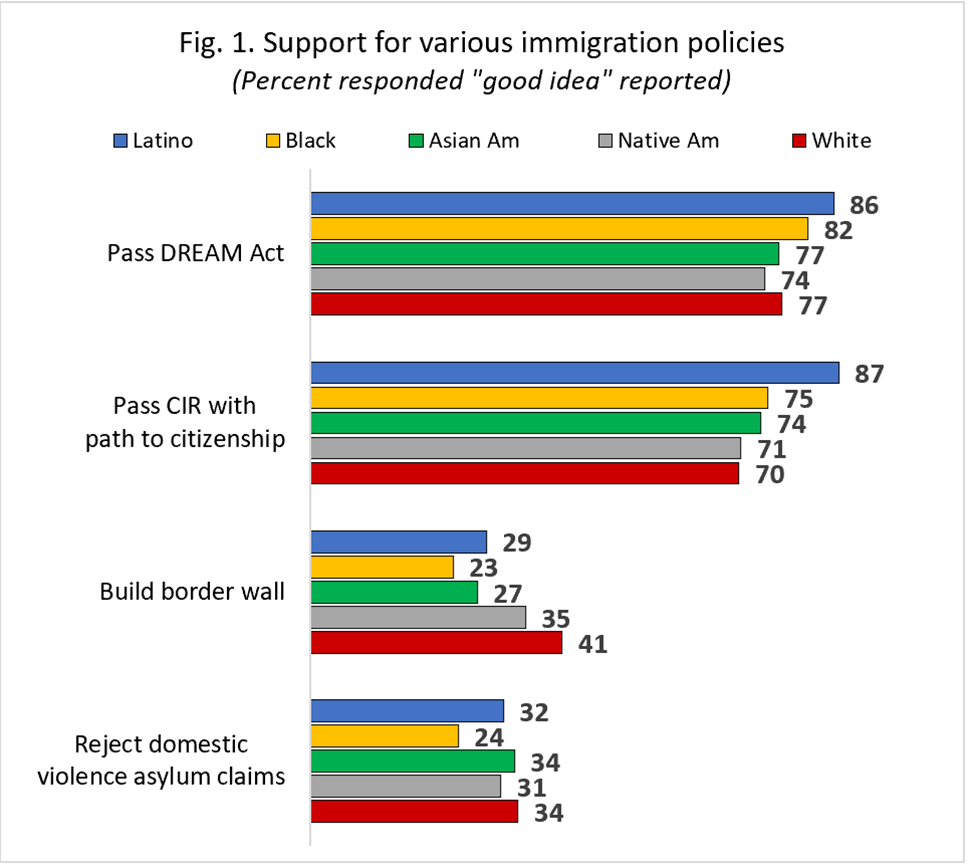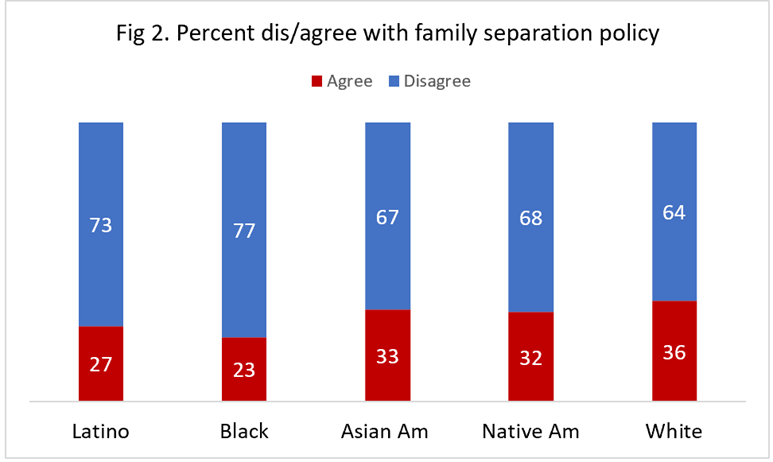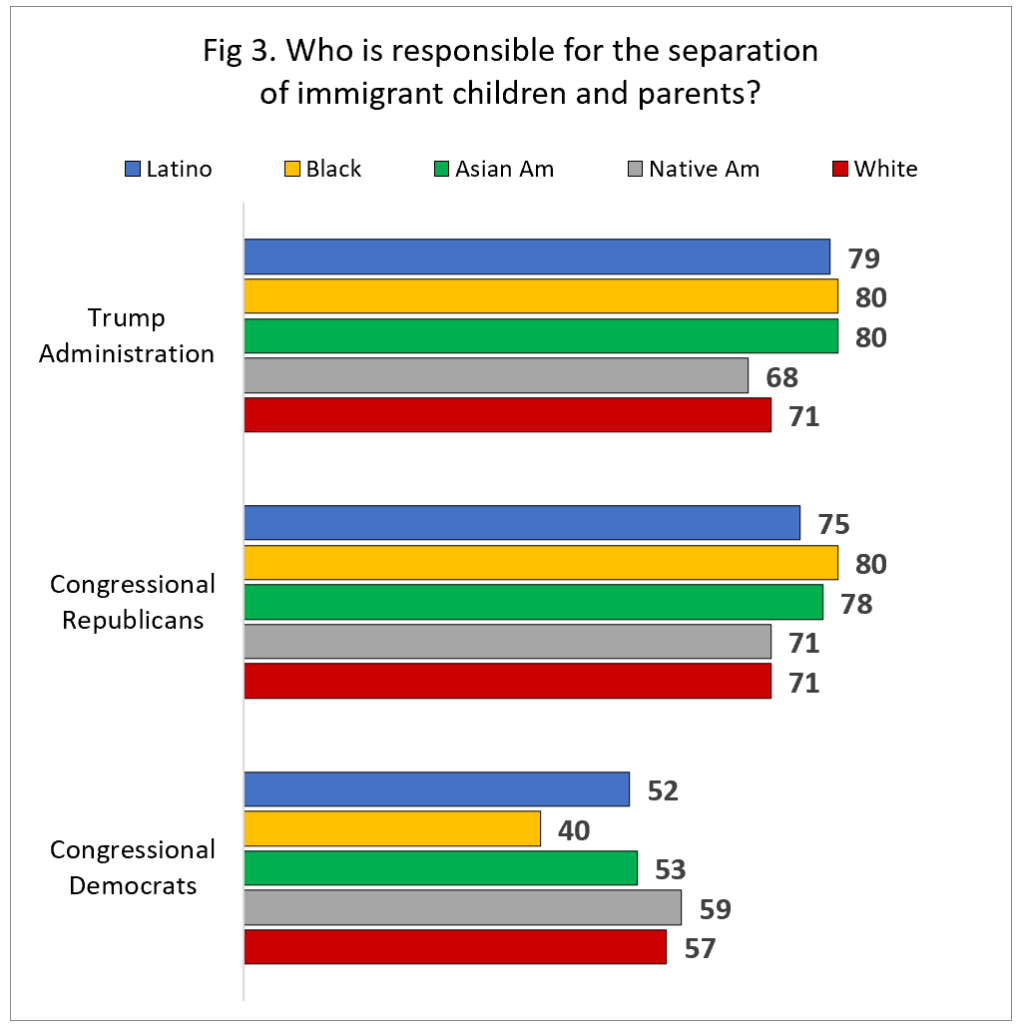On election night 2016, as Donald Trump was confirmed the improbable winner, CNN analyst Van Jones declared the outcome to be, “…a whitelash against a changing country.” Our own analysis, and that of other scholars, confirm that voters’ attitudes on immigration in 2016 were highly polarized along partisan and ethno-racial lines. During the Presidential Election, identity politics (voting along racialized lines) was at an all-time high, leading Trump to win a substantial share of White voters, and Clinton to win handily among ethnic/racial minorities. Heading into the 2018 congressional mid-term elections, we need to consider whether immigration remains a racially contentious and polarizing issue. Will identity politics, driven by immigration sentiments, play a prominent role in 2018 as it did in 2016?
Immigration attitudes were inextricably linked with identity politics during the contentious 2016 Presidential Election. If public opinion on immigration remains racially polarized, then it makes sense for Republican congressional candidates to adopt Donald Trump’s anti-immigrant campaign strategy in an attempt to solidify White voters. Indeed, President Trump believes this is a smart move considering his July 31 tweet, “One of the reasons we need Great Border Security is that Mexico’s murder rate in 2017 increased by 27% to 31,174 people killed, a record! The Democrats want Open Borders. I want Maximum Border Security and respect for ICE and our great Law Enforcement Professionals!” However, if the electorate is less polarized on immigration today than it was in 2016, it seems foolhardy for Republican congressional candidates to solidify their support on the basis of immigration issues. If White voters have softened their stance on immigration, running on an anti-immigrant platform could backfire.
One of the reasons we need Great Border Security is that Mexico’s murder rate in 2017 increased by 27% to 31,174 people killed, a record! The Democrats want Open Borders. I want Maximum Border Security and respect for ICE and our great Law Enforcement Professionals! @FoxNews
— Donald J. Trump (@realDonaldTrump) July 31, 2018
In order to evaluate whether voters’ immigration attitudes remain racially divided, this analysis examines the results of the Latino Decisions July 2018 survey of 2,045 registered voters residing in 61 designated “most competitive” House districts. The survey includes a statistically representative sample of 400 respondents from each of the following groups: Latinos, African Americans, Whites, Asian Americans and Native Americans. Comparisons will be made across these five groups. Of course, important variations exist within each of these populations, but the strategy of identity politics requires that candidates direct their campaign messages around these broader identities. Moreover, it has been argued that since 2016, these five groups are increasingly engaging in politics in politically distinct ways, making such comparisons meaningful.
In the survey, respondents were presented with four immigration policies and asked whether each was a “good idea” or “bad idea.” The first concerns congressional passage of DACA, or the Deferred Action for Childhood Arrivals, also called the “Dream Act.” The Dream Act provides deportation relief to individuals who arrived without documentation as children and have spent much of their lives residing in the United States. President Trump has sought to phase out this program and the future of DACA remains uncertain unless Congress exercises its constitutional prerogative to protect Dreamers. The second policy revolves around the passage of comprehensive immigration reform as a means of providing a pathway for citizenship for an estimated 10 million undocumented persons. The third policy issue relates to congressional spending of 25 billion to build a 50-foot wall along the U.S.-Mexico border. Donald Trump has made the border wall a major policy priority for his administration. Congress appears to be less enthusiastic given the absence of funding for its construction. The final policy area asks about the recent decision by Attorney General Jeff Sessions to remove domestic violence as grounds for obtaining asylum in the United States. This change is largely designed to deter Central America migrants who are fleeing social and domestic threats in their homelands.


Figure 1 reports the percentage of individuals across the five groups who believe each policy is a “good idea.” Several things stand out from the results. First, the responses largely cluster together across the five groups. This is particularly true when it comes to the Dream Act and ending domestic violence asylum claims. The former is overwhelmingly supported, while the latter receives tepid support. The one policy area in which White respondents deviate from the others is funding for the border wall; 41 percent believe it is a good idea. Nonetheless, this is merely 6-points higher than Native American respondents and 12-points higher than Latino respondents. Two years ago, the border wall was a polarizing and contentious issue. In 2018, the border wall receives meager support across all respondents. The largest gap between Whites and Latinos is found in response to providing undocumented immigrants with a pathway to citizenship via the passage of comprehensive immigration reform (17-point difference). Nonetheless, on this issue, it is Latinos who are the outliers, while White respondents closely align with those of African Americans, Asian Americans and Native Americans. Taken together, these results do not indicate that in 2018 Whites and ethnic/racial are on opposite sides of the spectrum when it comes to immigration policies. The responses across the board are more alike than different.
One of the most controversial policies implemented by the Trump Administration was the separation and detention of children arriving with parents seeking asylum as part of a so-called “zero-tolerance” strategy. An estimated 2,000 children were taken from their parents and placed in detention centers while awaiting adjudication outcomes. Facing intense criticism from republican leaders and supporters, President Trump ended this policy about two months after it was implemented. In an effort to deflect some of the backlash, Trump blamed Democrats by tweeting on May 26, “Put pressure on the Democrats to end the horrible law that separates children from there [sic] parents once they cross the Border into the U.S. Catch and Release, Lottery and Chain must also go with it and we MUST continue building the WALL! DEMOCRATS ARE PROTECTING MS-13 THUGS.”


Respondents were asked to state the degree to which they agreed or disagreed with the Trump Administration’s policy of separating children from their parents who were seeking asylum. The results in Figure 2 show that there is overwhelming opposition to this policy regardless of one’s race or ethnicity. The largest gap is between African Americans and White respondents (a 13-point difference). Yet, even here, White respondents hardly deviate from the other groups as they are similar to those of Asian Americans (3-point difference) and Native Americans (a 4-point difference). The gap between Whites and Latinos is a mere 9-points. The results above put into doubt any claims that White and minority responses are worlds apart when it comes to supporting Trump’s zero-tolerance strategy.


Donald Trump blamed Democrats in Congress for the family separation fiasco. We asked respondents, in separate questions, whether they thought responsibility for this draconian policy lay with President Trump, the Democrats in Congress or Republicans in Congress. The results presented in Figure 3 show that large majorities across the board hold the Trump Administration and Republicans in Congress responsible for this policy. Nonetheless, Democrats in Congress are not completely blame-free as significant numbers also hold them responsible. There are some variations in each of the three categories, but they can hardly be characterized as racially polarized.
Is the so-called “whitelash” over? The results of the Latino Decisions survey suggest that is indeed the case as White voters have softened their positions on immigration. Across the selected immigration questions, White attitudes, with some small variations, mirror those of Latinos, African Americans, Asian Americans and Native Americans. Had the results shown immigration attitudes to be highly polarized then it would make sense for Republican congressional candidates to follow Donald Trump’s 2016 campaign strategy. The 2017 Virginia governor’s race is an instructive case for Republicans who adopt such an approach given this change in attitudes. In this case, Republican Ed Gillespie pursued a Trump-like strategy against his Democratic opponent Ralph Northam. Gillespie ran a series of attack ads contending that Northam’s support for sanctuary cities was protecting MS-13 gang members. Trump echoed this message by tweeting “Ralph Northam, who is running for Governor of Virginia, is fighting for the violent MS-13 killer gangs & sanctuary cities. Vote Ed Gillespie!” In the end, the strategy backfired with Ralph Northam winning decisively 54% of the vote to Gillespie’s 45%. The Virginia example and the data presented here demonstrates that a racialized campaign around immigration is now an exhausted strategy.
***
Adrian D. Pantoja, Ph.D., is Senior Analyst with Latino Decisions and Professor of Politics at Pitzer College.


